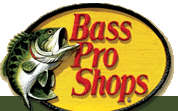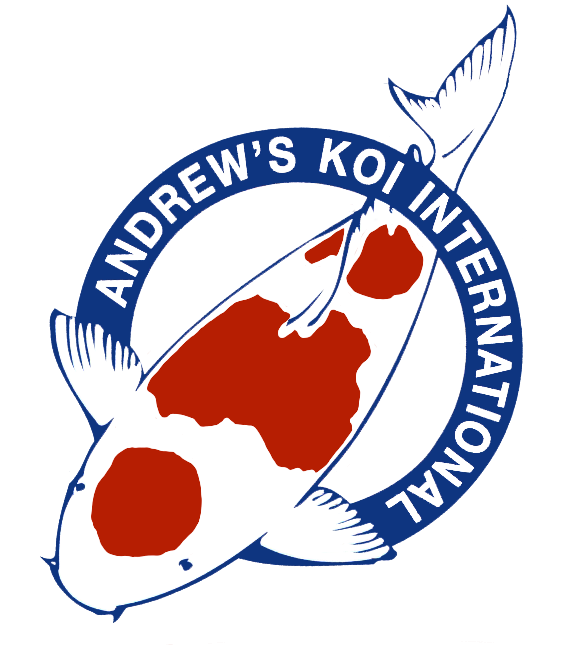FALL POND TIPS (FOR WARMER CLIMATES)
by Ray Jordan
Texas Koi and Fancy Goldfish Society
(Published September 2009)Foreword: This is the third in a series of four articles designed to offer tips for best care of your koi throughout the year based on seasonal needs. The focus of this information is for warmer climates but it will benefit a broader audience as well. Koi are best raised as a four season animal which is how their common carp ancestors evolved. As seasons progress important hormonal and environmental signals prepare koi to develop to their genetic potential. Perpetual summer or eternal winter temperatures have their own individual unique disadvantages on the growth and health of our koi. Understanding seasonal variations in terms of temperature, light and feeding techniques and working to moderate the inherent stressors can be an effective method to improve the health and beauty of your koi. In warmer climates with intense summers efforts to moderate the effects of intense sunlight and provide milder seasonal temperatures can be beneficial. Advice on the best individual care of your koi depends on many factors including your local climate, source water perimeters, pond and filter system dynamics, stocking rate, and your personal goals as a koi hobbyist. All of these factors are interconnected and making small but consistent improvement in multiple perimeters can have a significant impact on your ponds water quality and koi development. It is critical to the health and development of your koi to maintain as clean an pond/filter system as possible regardless of season: If you do not have effective bottom drain/s, skimmer/s, and a method to separate and remove solids from your water before it clogs your biological filters please consider how best to retrofit these important elements without delay. Yes, it is possible (with a lot of daily effort) to remove debris and sludge the old fashioned way. It is important to understand that without a clean pond/filter system 24/7 you will likely continue to struggle to keep your water quality at a high level and your koi healthy. Koi ponds/filter systems should be DESIGNED and MAINTAINED to easily remove waste from your pond.
THE FALL SEASON: brings more moderate cooler temperatures that can last well into December or even early January in our area. The fall season is the most important season for growth and development in warmer climates. Hot summers can be very stressful and maintaining good water quality with our ponds peaking in the high 80’s to low 90’s can be difficult. Koi keepers need to understand that koi highly stressed by summer heat will have their health and overall development adversely affected. It is important to base your fall koi/pond plans on how successfully you were able to moderate the effects of our summer extremes. An outdoor koi pond/filter system is a dynamic changing environment. Keeping koi is primarily about keeping your pond water clean, stable and healthy. It is also about taking advantage of the prime season to grow and have your koi develop which is the fall. In our area we have a combination of trees shedding leaves and also many live oak trees that drop lots of acorns. It is important to prevent the leaves and acorns from getting into your pond or remove them as quickly as possible. Following are suggestions that will hopefully help you manage your pond and koi through a hig performance fall season and prepare them to enter the coming winter season in top condition. Each of these topics merit a greater in depth discussion than found in this article. I urge you to explore these issues in more detail depending on your needs.
FEEDING: If you enjoy feeding your koi this is the season to enjoy. As temperatures drop you should slowly ramp it up while continuing to watch your water quality closely. As water temperature drops and daylight hours shorten your koi are receiving nature’s signals to “stock up” for the approaching winter. Your koi’s appetites should increase as water temperatures drop through the high 70’s to the mid 60’s. Remember optimum water temperature for koi is between 68 and 78F degrees. When your water temperature begins to drop into the high 70’s you can increase your feeding amount gradually up to a peak of 3% of total koi body weight daily. The best feeding techniques divide the amount fed daily into 4-8 feedings per day if possible. This is the time of the year in our warmer climate to switch to higher protein foods if you are so inclined to try and maximize the annual growth rate. However the switch should be gradual by mixing some higher protein food with regular food and slowing increasing the amount of higher protein food until the switch is complete. (note: in cooler climates the best temperatures for increased feeding are in their summers) Most of the year I feed koi foods that are between 32-38% protein. Switching to a food with 40-50 % protein in the prime time fall season can boost growth rates a bit. However, it is still all too easy to over feed even in the fall. Only feed as much as your koi can handle and your filtration system can process and still maintain high quality water. Watch for foam appearing near your waterfall on in your skimmers which is symptom of having too high a level of organics in your water. Also watch for floating koi feces or clear fecal casings in your skimmer which is a sign you need to stop feeding for a day or two and start feeding at a lower amount, or lower protein food. If you like to feed natural foods such as shrimp, krill, silk worms, etc. this is the time but again please do not over do the richer diet. Automatic or demand koi feeders can help with increasing the number of feedings per day. I suggest only putting a day or two worth of food in the feeder to keep it fresh and decrease the potential of dumping massive amounts of food if it malfunctions. As the water starts to cool down in the fall healthy koi can easily make up for any growth they might have missed during the hottest part of the summer when feed was reduced.
POND & FILTER MAINTAINENCE: Because of higher feeding in the fall fish waste can accumulate rapidly. Frequent and even daily dumping of sumps and filter backwashing may be needed if you are trying to max out the growth season. If the sump smells nasty you need to increase the maintenance frequency. You want the waste to smell more like a freshly tilled garden than a sewer. Also leaf drop and acorns can quickly clog skimmers and if left to decompose will affect your water quality. To compensate you will need to increase the amount and frequency of water changes and filter cleaning. Do not forget to use adequate dechlor. Chlorine is likely still the #1 reason for koi deaths. I recommend you avoid auto fill devices if you use chlorinated water. Sooner or later these devices fail and dead fish are the result.
OXYGEN: More good news about lower water temperatures is higher levels of oxygen are available to your fish and pond inhabitants. Lower temperature increases the ability of water to hold dissolved oxygen and the rate of metabolism slows for every 10 degree centigrade temperature change (18 degrees F) in cold blooded animals. This means that the requirements of fish, bio-filtration bacteria, algae, in fact all living things are decreased by 50% for nutrients, oxygen, and everything else as temperatures drop from the high 80’s to the high 60’s.Remember that the beneficial bacteria that live in your filter are also dependent on the amount of oxygen in the water to thrive and do their job of converting ammonia to nitrites and nitrates. Higher oxygen levels help to increase the population of “good” bacteria and more efficiently process the higher ammonia and nitrite levels that are produced during the increased feeding in the fall. However, all this does not mean you can turn off your air pumps. Remember one goal is to meet or exceed 80% saturation point at a given water temperature. It is much easier to accomplish this in cooler water conditions.
ALGAE: Algae is ever present in our ponds, the good and the bad/ugly types co exist to some degree. Remember that over feeding and over stocking can tilt the scale to the bad algae types. It is only when things get out of balance and algae increases to the level it starts clogging our filters, or prevents us from seeing our koi, or negatively affects our pond water quality that algae is a problem. With higher oxygen levels and lower light levels you will likely see the balance tip towards the good forms of shorter carpet type algae. A sign of a healthy koi pond is a thriving growth of short filamentous algae on pond surfaces. This beneficial type of algae helps balance the pond by utilizing pond nutrients and removing them before platonic algae starts to increase in population and create green water.
WATER TEMPERTURE: Rapid changes in water temperature is something we want to avoid. If a strong early cold front blows in you should partly or completely bypass your water fall or shower filter if possible. You can assume your fish will be significantly stressed if your water temperature drops by more than +/- 5 degrees overnight.
SHADE: Many of us increase the shade over our ponds during the summer. In the fall we can reverse this process to prolong the season fall temperatures in our ponds. Shorter days reduce the amount of sunlight hitting our ponds removing summer shade will help maintain temperatures in the sweet spot a few weeks longer.
KOI SHOWS: In warmer climates fall or even winter is the best time for koi shows. The lower water temperatures helps with show water conditions and oxygen levels. Also there is minimal chance that koi will spawn. Additionally, lower temperatures tends to help bring more vivid colors to our koi. Last but not least cooler temperatures also makes show set up and tear downs easier on us humans. Of course all club shows cannot be held in the fall. On the other hand preparing koi for a fall show means fasting them for a week of prime growth season. But, still not a bad price to pay for taking our koi to show in the fall.
In the final part of this article I will offer some tips for making the most of our milder winter seasons when our koi will rest and some growth and important color development occurs in our area.



